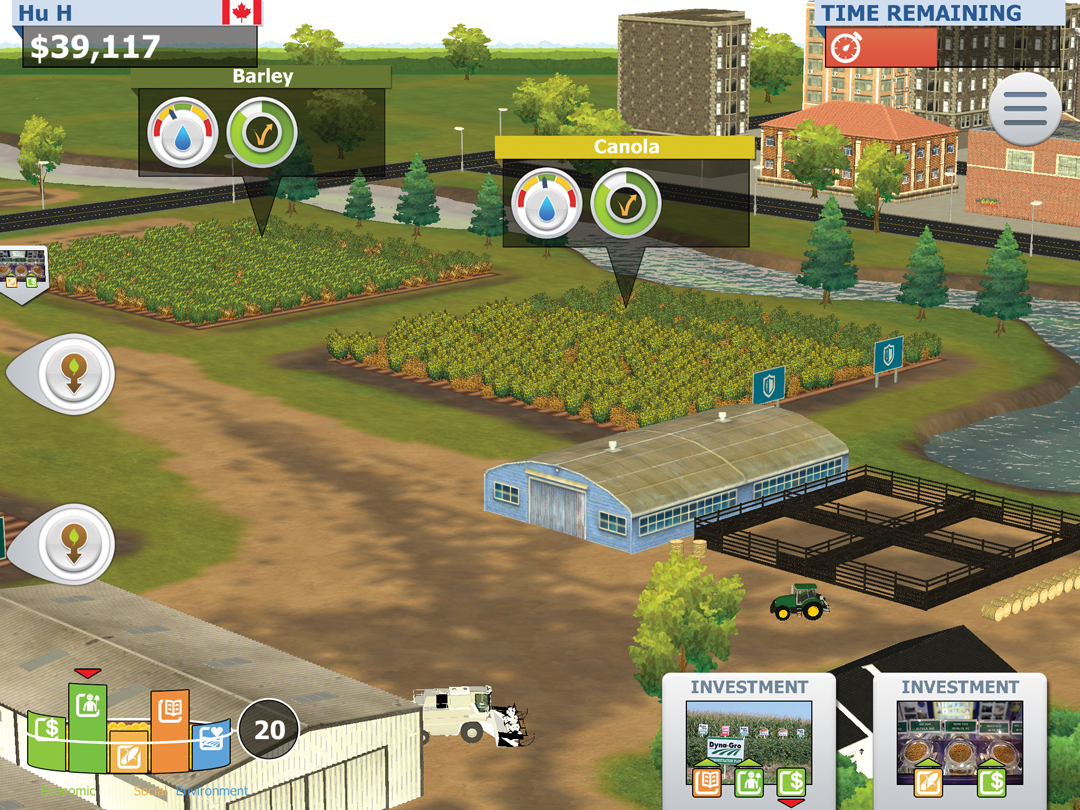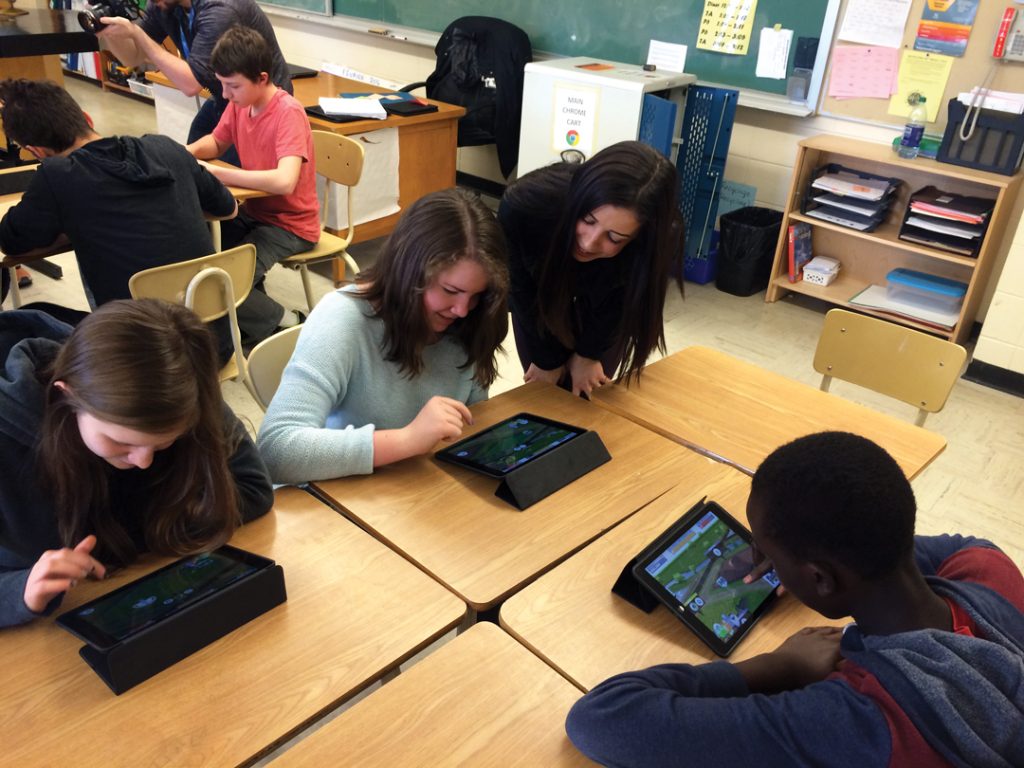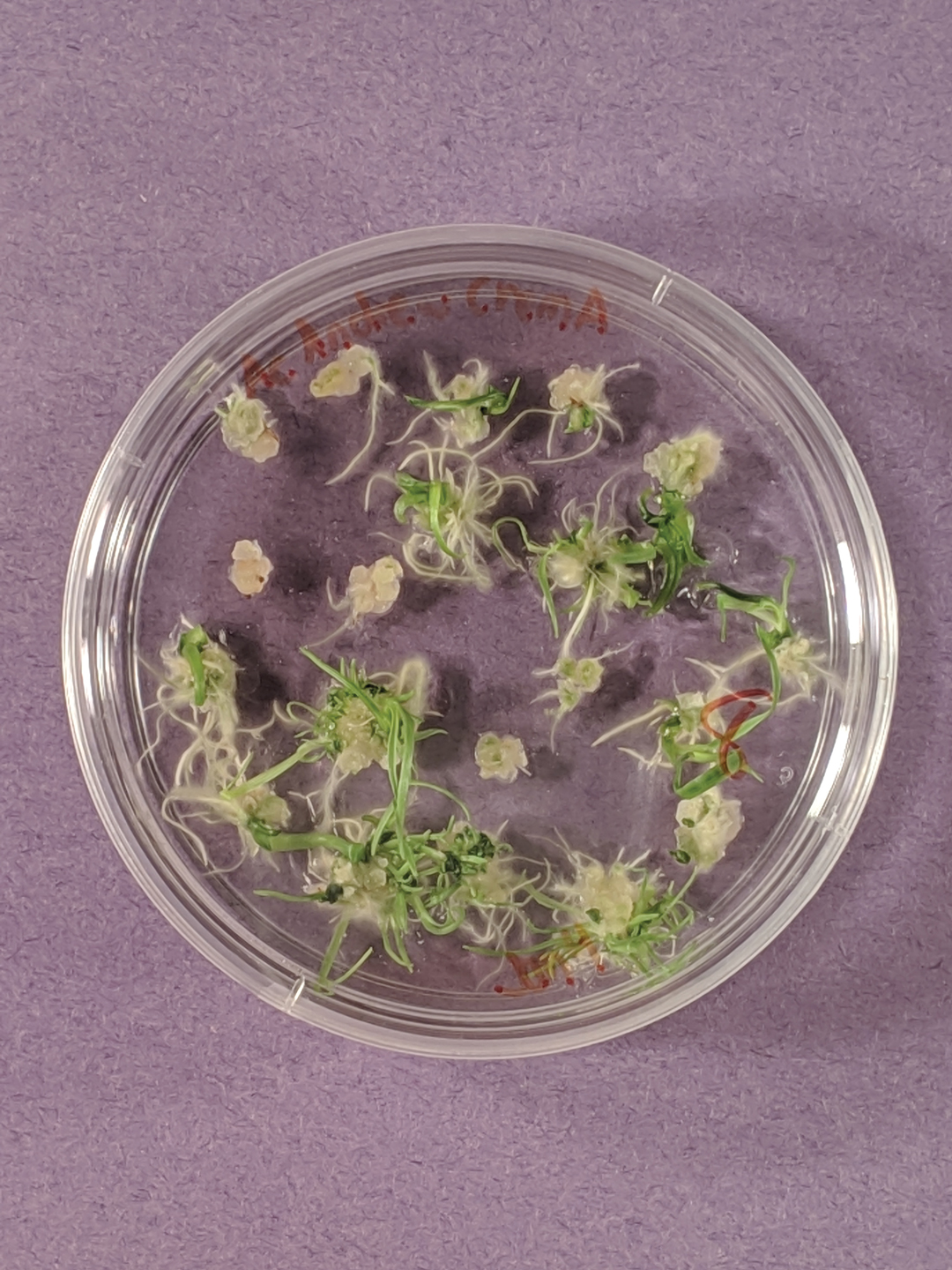THE BUSINESS OF FARMING MADE FUN
VIDEO GAME TEACHES KIDS ABOUT THE COMPLEXITIES OF AGRICULTURE
BY SARAH HOFFMANN
Food and farming go hand in hand, but in the urbanized 21st century it can be difficult for kids—and even grown-ups—to make the connection. Journey 2050, a farm simulator video game developed by a group of agriculture organizations, helps students in junior and senior high understand the intricacies of producing enough food to sustain a world population that experts predict will swell to nine billion people by 2050.
The computer game was designed to appeal to technology-motivated students in Grades 7 to 12, as well as teachers looking for direct links to science and social studies curriculums. Journey 2050 lets players make choices about crop types, fertilizer application methods, water usage, and business and social investments, as they aspire to develop the most sustainable farm possible.
Sustainability, as Journey 2050 demonstrates, is not a single measurement, but rather the result of a multitude of factors.
“True sustainability is balancing your social, economic and environmental program,” explained Lindsey Verhaeghe, corporate social responsibility specialist for Agrium, an agriculture input company. “You have to make investments back into areas that are weak and improve them.” Agrium partnered with the Alberta Canola Producers Commission and the Calgary Stampede to create Journey 2050.
To help students visualize the need for balanced investment, each player has a barrel in the corner of the screen. The slats of the barrel represent components of sustainable agriculture such as water quality, soil health, education, food production, profitability and jobs. A player’s sustainability score can only rise as high as the shortest section of the player’s barrel.
Verhaeghe pointed out that students quickly realize how difficult it can be to produce food sustainably, and the goal of the game is to show players the need for continued advancement and innovation in agriculture.
No one knows better than Robert Saik how technological improvements can change agriculture for the better. Saik is an agronomist who has been advising farmers for 30 years. He noted that farmers improve their soil health by increasing organic matter. On Canadian farms, this has been accomplished by moving towards zero or minimum tillage.
“By doing this, we conserve organic matter and reduce erosion from soils,” Saik said. “And it’s technology such as advanced equipment allowing us to precisely place nutrients and other crop inputs, along with enhancements in genetic technology, that allow farmers to achieve greater soil health.” He added that for every one per cent of organic matter, farmland sequesters 20 tonnes of carbon per acre, thereby reducing greenhouse gas emissions. Soils high in organic matter also store water more efficiently, allowing farmers to produce more food with the same amount of water.
Nutrient use is another component of agriculture that can improve the sustainability of farms, said Saik. Nitrogen fertilizer is the most essential plant nutrient, and a key to human survival, but too much of it can acidify soils. On the other hand, Saik said new technology like slow-release fertilizer allows farmers to reduce nitrous oxide emissions.
Just as Journey 2050 shows students how sustainability is multifaceted, Saik believes that more environmentally sustainable agriculture is also more economically sustainable.
“Farmers don’t want to waste or utilize inputs incorrectly,” Saik said. “It’s important for people to understand that when they see farmers working in their fields, those farmers are making conscious decisions to grow the safest and most reliable crops in a sustainable manner.”
Saik founded the central-Alberta-based company Agri-Trend, which advises farmers on crop production and marketing. These days, however, he spends a great deal of time working with and speaking to farmers around the world. Journey 2050 also takes a global approach. Students follow three farm families from Canada, Kenya and India. While the crops change, the need to maintain healthy soil, use nutrients efficiently and minimize the farm’s environmental footprint remain the same.
Anyone can play the game online at journey2050.com. However, the Journey 2050 committee also provides ways for students to have a more in-depth educational experience. Teachers in and around Calgary can take their students on a free daylong field trip to the Calgary Stampede grounds, where educators walk students through the principles behind sustainable agriculture and then let them compete against each other as they play Journey 2050 on tablets.
Robyn Kurbel, education and programming co-ordinator for the Calgary Stampede, runs the field trip. In the 2014/15 school year—the game’s pilot year—Kurbel said 5,700 students participated in the field trip, adding that the program is booked until the end of the 2016 school year with an estimated 7,000 students who experienced Journey 2050 in 2015/16.
“The kids are usually dead quiet when they’re playing the game, which is impressive considering that 12-year-olds are usually never quiet at the same time,” said Kurbel, a former high school science and math teacher. “You’ll walk around and hear the kids talk about how the game is addicting, but they’re learning something as well.”
Teachers can also book guest speakers to come to their classrooms and do a shorter version of the field trip. As well, there is an entire suite of lesson plans, classroom activities and mini-tests that teachers can access online and present to their students, even if they themselves do not have an agricultural background.
Chantal Goudreau, a Grade 9 science teacher at St. Matthew School in Calgary, is one such teacher. She took advantage of the opportunity to have a guest speaker from Journey 2050 present the material to her class before the students played the game.
“I know that if I present this program or have a speaker come, my curriculum objectives are being achieved,” Goudreau explained. “But what’s great is that it’s a different way than I would be able to present it.”
She appreciates the hands-on learning about practical issues that the game provides. “It’s teaching the kids about real world problems that we’re facing,” Goudreau said. “They end up making choices in terms of how they want to improve soil health, and this translates into sustainable agriculture and what that means for our population 30 years from now.”
The game doesn’t stop with practical production issues on these farms either. Students learn about how food waste around the world cuts into global food supply. They also gain a better understanding of how urban sprawl reduces available agricultural land. Finally, they see how a career in agriculture can be an option for them, even if they didn’t grow up on a farm.
“At the end of the game you can build your own character and it spits you out different options of careers you could have,” Goudreau said. “As they play this game, they get interested in these issues and they realize they like this and could do it for the rest of their life.”
Verhaeghe stressed the importance of education both for farmers and their families as well as for people who may have never been to a farm. “If we’re going to sustainably feed the world, we have to have educated people invested and working in agriculture,” Verhaeghe said, adding that, at Agrium, for example, everyone from information technology experts to human resources professionals play a role in the process of producing food.
Whether playing Journey 2050 guides students to a career in agriculture or not, everyone needs food, and an informed eater is essential for the continued success of agriculture around the world.
“Agriculture is the glue of civilization,” Saik said. “Consumers have a very large role to play in educating themselves in the facts and the science involved in agriculture today.”
As Verhaeghe sees it, Journey 2050 is a 21st-century way of educating the next generation about 21st-century challenges. “Agriculture has never been taught like this before so it’s a really new opportunity for schools. It’s cutting-edge; there’s not another program like this.”









Comments